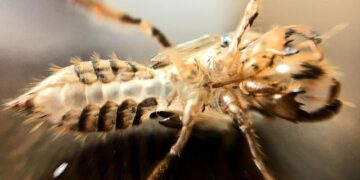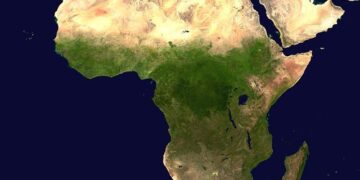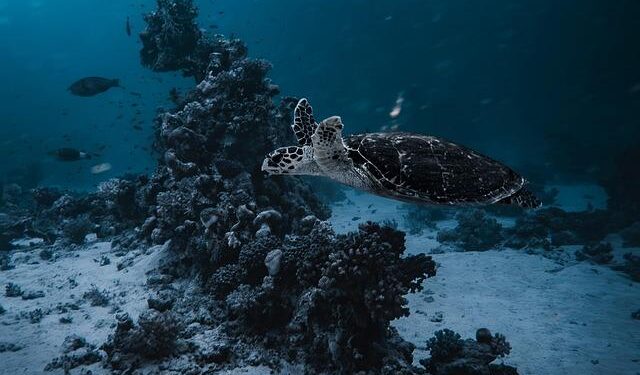North Carolina State University is set to host an engaging seminar spotlighting the fascinating world of marine turtles, delving into their biology, ecology, and evolutionary history. This event promises to bring together experts, researchers, and students dedicated to understanding these remarkable sea creatures that have navigated our oceans for millions of years. Attendees will have the opportunity to explore the latest scientific insights into marine turtle behavior, habitat challenges, and conservation efforts aimed at protecting these vulnerable species in a rapidly changing environment.
Emerging Research on Marine Turtle Migration Patterns Reveals Critical Conservation Needs
Recent satellite tracking studies have unveiled previously unknown routes taken by several marine turtle species during their long migrations across oceanic currents. These findings indicate that turtles utilize highly variable pathways that depend heavily on seasonal changes and oceanographic features such as temperature gradients and nutrient upwelling. The data also highlight significant overlap between migration corridors and areas impacted by fishing activities, shipping lanes, and coastal development, underscoring unexpected threats to turtle populations during their journey.
Key conservation priorities identified include:
- Protection of dynamic migratory stopover sites that serve as critical feeding and resting zones
- Implementation of bycatch reduction measures in fisheries intersecting known migration routes
- Enhanced monitoring of ocean conditions influencing migration timing and pathways
| Species | Primary Migration Distance (km) | Known Threats |
|---|---|---|
| Loggerhead Turtle | 1,200 | Fishing nets, Vessel strikes |
| Green Turtle | 900 | Coastal development, Pollution |
| Leatherback Turtle | 2,500 | Bycatch, Ocean warming |
Ecological Impact of Climate Change on Sea Turtle Nesting Habitats Explored
Rising global temperatures and shifting weather patterns are profoundly altering the sandy shores where sea turtles lay their eggs. Increased beach erosion, caused by stronger storms and higher sea levels, is reducing the available nesting area, forcing female turtles to seek less optimal locations. Moreover, the warming of sand affects the sex ratio of hatchlings, skewing populations toward females due to temperature-dependent sex determination-a phenomenon with long-term implications for genetic diversity and species survival. These changing conditions challenge the delicate balance of nesting ecology, highlighting the urgent need for targeted conservation strategies.
Researchers have identified several key environmental stressors impacting sea turtle nesting success:
- Beach erosion and habitat loss due to intensified storms and sea-level rise
- Temperature fluctuations influencing embryonic development and hatchling sex ratios
- Light pollution disrupting hatchling orientation to the ocean
- Human encroachment leading to nest disturbance and mortality
The following table summarizes these impacts along with potential conservation responses:
| Impact | Effect on Nesting | Conservation Strategy |
|---|---|---|
| Beach Erosion | Loss of nesting sites | Artificial beach nourishment |
| Temperature Rise | Skewed sex ratios | Shading nests or relocating eggs |
| Light Pollution | Hatchling disorientation | Implementing “dark sky” zones |
| Human Activity | Nest destruction | Regulated beach access during nesting season |
Expert Recommendations for Enhancing Marine Turtle Protection Policies at NC State University
Leading experts at NC State University emphasize the urgent need for adaptive management strategies that incorporate ongoing scientific research into marine turtle conservation efforts. By integrating satellite tracking data with local nesting site monitoring, policymakers can more accurately assess population dynamics and implement targeted protections. Recommendations highlight the importance of community-driven initiatives, urging collaboration between researchers, coastal residents, and government agencies to ensure effective enforcement and habitat preservation.
Further strategic actions include the enforcement of stricter regulations on coastal lighting and fishing practices during critical nesting seasons. The following table summarizes key policy enhancements suggested by the seminar panel:
| Policy Element | Recommended Action | Expected Outcome |
|---|---|---|
| Coastal Lighting | Implement turtle-friendly lighting ordinances | Reduce hatchling disorientation |
| Fishing Regulations | Mandate bycatch reduction devices | Lower accidental turtle captures |
| Habitat Protection | Expand marine protected areas | Ensure safe nesting and foraging grounds |
- Promote cross-disciplinary research to address emerging threats such as climate change and pollution.
- Develop education programs to raise public awareness and foster stewardship among local communities.
- Increase funding support for long-term population monitoring and policy implementation.
Wrapping Up
As the seminar concluded, attendees left with a deeper understanding of the intricate lives of marine turtles and the critical roles they play in ocean ecosystems. NC State University’s continued commitment to advancing research in biology, ecology, and evolution underscores the importance of protecting these ancient creatures amid growing environmental challenges. With ongoing studies and collaborative efforts, the hope remains that future generations will witness thriving populations of marine turtles and healthier marine habitats worldwide.































